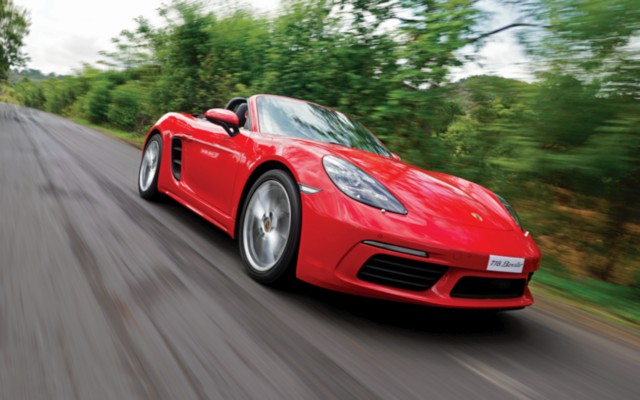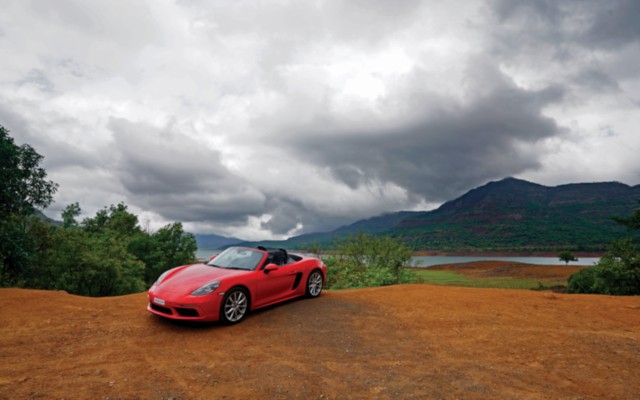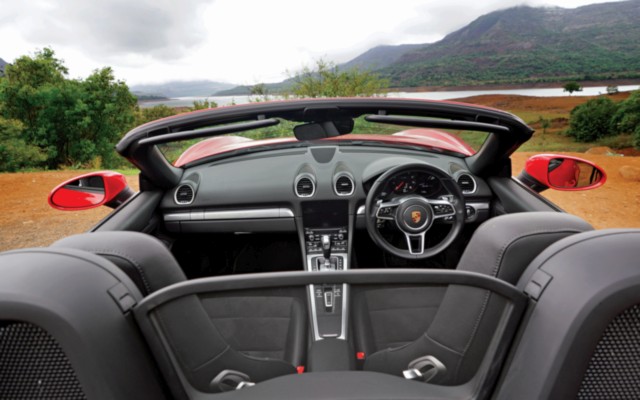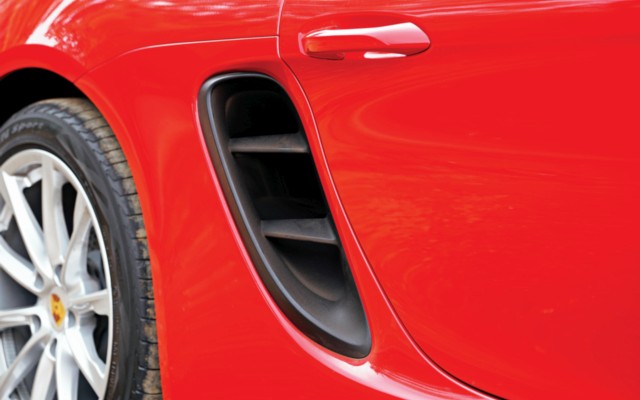
The new Porsche 718 Boxster hits the road running with a significant prefix and an angry flat-four motor making all the right noises. Does it fill in those size six shoes, though?
Story: Jim Gorde
Photography: Saurabh Botre

Hitting the right notes in this day and age is a major challenge. Even with your A-B-Cs in place, each approach, when delivered and offered, will be perceived differently and not always approached like the creator may have imagined. However, that’s where the factor of chance steps in. Is it good by chance? No, it’s good because it was made well. Is it received well by chance? Perhaps. And that’s where we come in.
It’s been 40 years since Porsche last offered a flat-four engine, and with a 2.0-litre displacement, no less. However, the ‘718’ name, also new, marks the resurrection of the nomenclature first seen about 60 years ago on a hardcore development of the 550A. It was a mid-engined racer with a 1.5-litre flat-four making 142 PS. The car made its début in the 24 Hours of Le Mans in 1957, but didn’t finish as it was involved in an incident. The following year, though, it finished first in its class and third overall. In the early 1960s, the 718 name was even in Formula 1! Turn the clock back to the present and we find the motor in the new Boxster is a spiritual successor with a more modern construction. And it’s turbo’d.
Look at the new Boxster, though, and it’s vastly similar to the 981. Porsche say it’s the 982 and we believe them, especially from the rear, where the new black stripe arrives between boot-lid and bumper. The tail-lamp cluster pair is also all-new and rather striking. The shape, overall, with the tight lines and curvy wheel-arches that hug those precision-cut 19-inch wheels with low 40-profile rubber all evoke a sensation of speed, not to mention natural beauty. Especially when in a racy shade of red!

The cabin has enough space for two, and only two. There are door-pockets, a glove-box, and some storage under the centre arm-rest, but that’s about it. If you want to stash anything, it has to go in one of the two boots — you have 150 litres in the front, with 125 litres at the rear. Being a soft-top and being a Porsche, the roof folds and stays over the engine in the middle, behind the seats. So it doesn’t really eat into boot volume.
Doling out the information is a typically Porsche layout — large rev-counter in the middle, flanked by the speedo and tell-tale lights. Even being a turbocharged motor, this one revs to 7,500 rpm. It’s quite a piece of work, actually. Putting aside the purist line of thought and getting to grips with the fact that the 718 does embrace history and goes back to four cylinders — creating a seemingly needed space between itself and the 911 — and present-day technology trends to clean up its act, providing high power with lower fuel consumption.
The all-new 2.0-litre flat-four boxer engine uses a 91-mm bore in conjunction with a 76.4-mm stroke length for a displacement of 1,988 cc. The firing order, 1-3-2-4, is different owing to the adoption of a single turbocharger, located where two more cylinders would have been, to keep several factors in check: from plumbing for the compressor and intake to cost. Turn the key and the boxer growls to life before, dare I say, settling into a properly grumpy, lazy idle. That’s akin to something from the other end of Stuttgart with twice the number of cylinders, actually.





















Leave a Reply